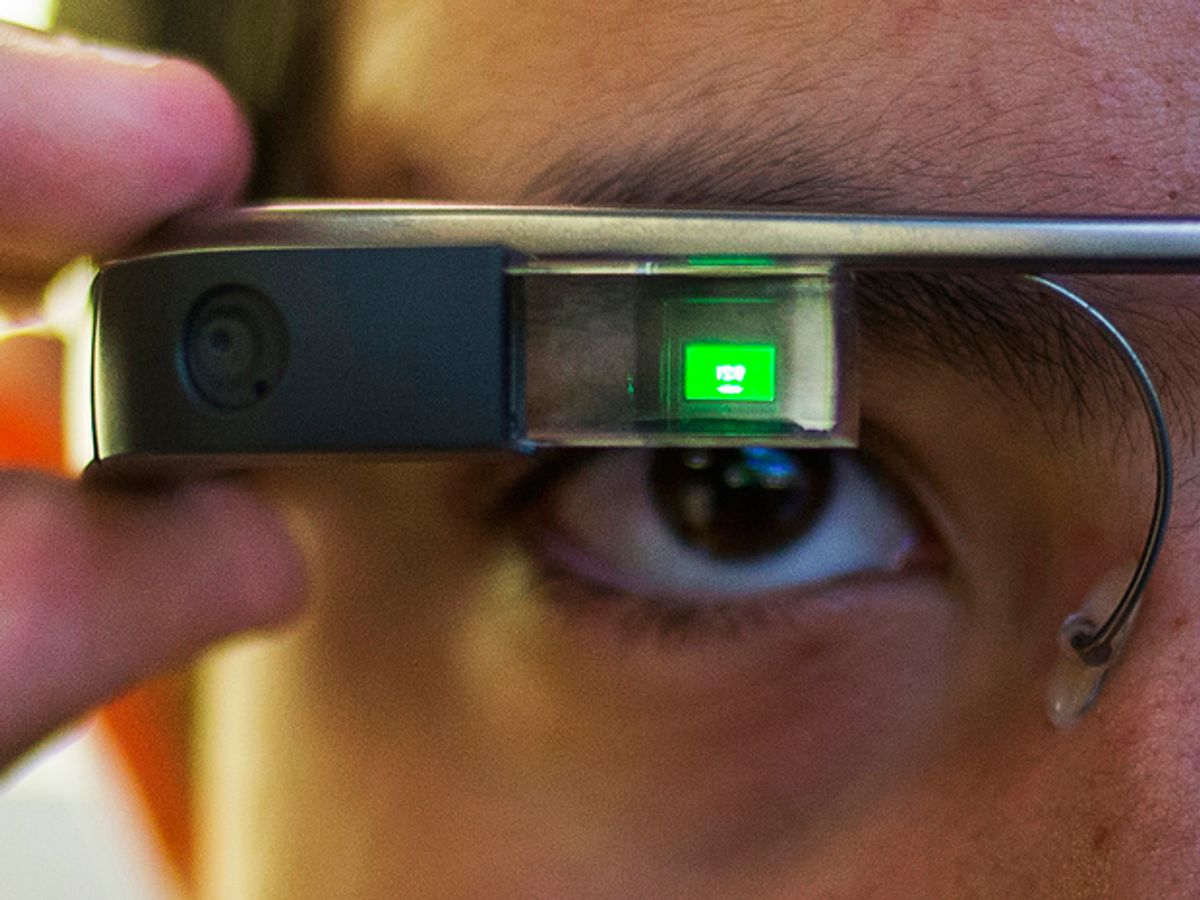It seemed like the nascent augmented-reality industry was on a roller coaster at the start of the year. Things looked bad when Google announced that it was terminating sales of its Glass headset in favor of developing some new version to be announced at some time in the future. (Possibly in a galaxy far, far away.) But then the future looked bright again when Microsoft unveiled its HoloLens AR headset at a razzle-dazzle press event in late January.
But the truth is that well before the debut of HoloLens, the AR ecosystem had been moving away from Google’s model of always-available wearable computing and toward the idea that AR headsets should be—at least for now—something you use only for specific tasks. At the Consumer Electronics Show (CES) in Las Vegas just after New Year’s, most of the capabilities advertised a few weeks later by Microsoft for its HoloLens prototypes were already on display on the show floor (albeit spread among several exhibitors), and they were mostly doing industrial and enterprise work.
One example was a US $5,000 industrial headset from San Francisco–based Osterhaut Design Group. Unlike Glass, whose single display is tucked away at the far side of the frame, occupying a small corner of the wearer’s field of view, ODG’s binocular system delivers graphics front and center. Flipping down a sunglasses-like visor blocks the wearer’s view of the outside world and converts the headset from augmented reality to virtual reality. (A $1,000 consumer version is planned for release later this year.)
Similarly, Epson was showing its Moverio BT-200 smart glasses. Most important, Epson didn’t bring just the glasses; it also brought third-party developers with examples of AR applications. While some developers were showing game and entertainment software, the most impressive demos were aimed firmly at enterprise and government users.
A Moverio demo by Herndon, Va.–based APX Labs featured Skylight, a system for field workers. When I tried it, arrows popped up on my view of the conference to indicate the direction of distant wind turbines. When I looked in that direction, I could call up data on the turbine’s performance and even see video of it.
Augumenta, headquartered in Oulu, Finland, eliminated the need for voice commands—always tricky in noisy work environments—with a system that can recognize hand gestures. I used it to play rock-paper-scissors, but ultimately the technology should allow a wearer to see a keyboard or industrial controls overlaid on the palm of one hand and “press” them using a finger from the other hand.
At the Moverio demo by Ngrain, of Vancouver, Canada, a scale model of an electric generator sat on the table. Once I put on the glasses, I could look at the model and highlight a particular part, causing a 3-D representation of that piece, overlaid on the generator, to pop up. The 3-D models tracked the changing perspective as I turned and moved my head, albeit with some jitter in the image.
Finally, I used the Moverio glasses to look at a pump mechanism using an app made by Scope AR, based in Edmonton, Alberta. Looking at the pump through the Moverio glasses allowed me to watch a series of instructions for performing maintenance, with virtual tools such as a wrench overlaid on the areas where they would be used on the real pump, plus an animation of the required motion.
And even though HoloLens is targeted firmly at the consumer, Microsoft’s presentation emphasized its usefulness for physical tasks. Like the AR instruments at CES, the HoloLens makes no attempt to emulate Google Glass’s minimal intrusion into the wearer’s field of view: The headset looks like a pair of ski goggles. The system can track eye movements, listen to voice commands, and follow hand gestures much as a Microsoft Kinect does. (Alex Kipman at Microsoft developed both the Kinect and the HoloLens.)
At its press event, Microsoft put users into an immersive version of the popular Minecraft world-building game, but it also showed several equipment maintenance and installation demos similar to those seen at CES. Even the use of hand-gesture interfaces wasn’t new. OVSR also demoed it at CES, combining its Razer headset with a gesture-detection sensor from Leap Motion.
We may yet see headsets displace the smartphone as the universal portable networked computer du jour, but it looks like we’ll first be taking a detour through living-room entertainment and factory-floor maintenance.
This article originally appeared in print as “Google Glass Is Dead, but Augmented Reality Lives On.”
